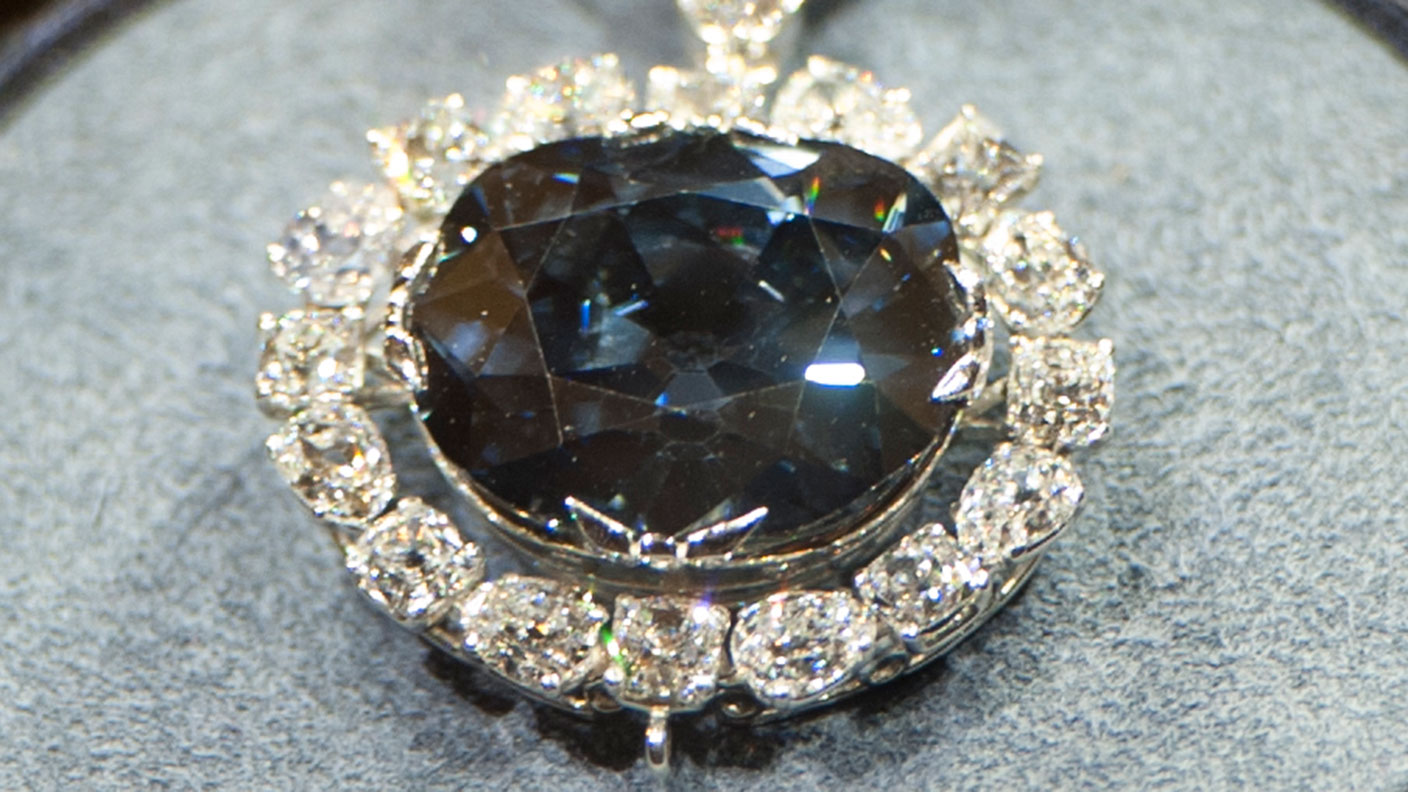11 September 1792: The French Blue diamond is stolen
On this day in 1792, a riotous mob ransacked the French crown jewels and made off with the famous French Blue diamond.


Precious jewels often seem to cast a spell over people. But depending on whom you asked, this was quite literally so of the famous French Blue. A spectacular gem that belonged to the kings of France, the 112-carat diamond shines a lustrous deep-blue. But held under ultraviolet light, it glows a sinister red evidence to some that the diamond was cursed.
The Bijou du Roi – the King's jewel, as it was also known – was plucked from the eye-socket of a statue that stood in a far-flung Hindu temple. That's if you believe the Victorian newspapers. In all likelihood, the diamond came from the Kollur mine in southern India – the same mine that produced the Koh-i-Noor in the British Crown jewels.
A 17th century French merchant and adventurer named Jean-Baptiste Tavernier bought the diamond and sold it to the Sun King, Louis XIV, around 1668. The French king had the diamond cut by the royal jeweller and it became known as The Blue Diamond of the Crown, or the French Blue for short.
Subscribe to MoneyWeek
Subscribe to MoneyWeek today and get your first six magazine issues absolutely FREE

Sign up to Money Morning
Don't miss the latest investment and personal finances news, market analysis, plus money-saving tips with our free twice-daily newsletter
Don't miss the latest investment and personal finances news, market analysis, plus money-saving tips with our free twice-daily newsletter
The diamond was set into a pendant for the illustrious Order of the Golden Fleece, and in time, the pendant came down to Louis XVI and his Austrian queen, Marie Antoinette. Then the French Revolution erupted.The king and queen were locked up, and on 11 September 1792, a mob ransacked and stole the French crown jewels. Louis XVI and Marie Antoinette met their end on the scaffold, and the French Blue disappeared without a trace.
That is until 20 years later. A suspiciously similar, albeit smaller, diamond popped up in 1812, in the possession of a London merchant. That diamond passed into the hands of King George IV for a short time, and then on through a succession of private dealers and family inheritances.
Today, the diamond is known as the Hope Diamond after one of its owners in the 1830s. You can go and see it at the Smithsonian in Washington, DC. In 2005, scientists were able to confirm that the Hope Diamond had been cut from the French Blue.
So, what's it worth? Well, the Smithsonian is coy – no surprises there. "How do you put a value on history", it shrugs. And as for the curse, the museum's still waiting on that one.
Get the latest financial news, insights and expert analysis from our award-winning MoneyWeek team, to help you understand what really matters when it comes to your finances.

Chris Carter spent three glorious years reading English literature on the beautiful Welsh coast at Aberystwyth University. Graduating in 2005, he left for the University of York to specialise in Renaissance literature for his MA, before returning to his native Twickenham, in southwest London. He joined a Richmond-based recruitment company, where he worked with several clients, including the Queen’s bank, Coutts, as well as the super luxury, Dorchester-owned Coworth Park country house hotel, near Ascot in Berkshire.
Then, in 2011, Chris joined MoneyWeek. Initially working as part of the website production team, Chris soon rose to the lofty heights of wealth editor, overseeing MoneyWeek’s Spending It lifestyle section. Chris travels the globe in pursuit of his work, soaking up the local culture and sampling the very finest in cuisine, hotels and resorts for the magazine’s discerning readership. He also enjoys writing his fortnightly page on collectables, delving into the fascinating world of auctions and art, classic cars, coins, watches, wine and whisky investing.
You can follow Chris on Instagram.
-
 Review: Trisara, Phuket – a feast for the senses in Thailand
Review: Trisara, Phuket – a feast for the senses in ThailandTravel Stay at Trisara resort on Phuket island in Thailand for the top-notch food and spa
-
 Expecting an inheritance? Don’t – only a fifth of Boomers plan to part with their cash
Expecting an inheritance? Don’t – only a fifth of Boomers plan to part with their cashHigher priorities are travel and spending time with loved ones, with even those on the highest household incomes shunning inheritances
-
 31 August 1957: the Federation of Malaya declares independence from the UK
31 August 1957: the Federation of Malaya declares independence from the UKFeatures On this day in 1957, after ten years of preparation, the Federation of Malaya became an independent nation.
-
 13 April 1960: the first satellite navigation system is launched
13 April 1960: the first satellite navigation system is launchedFeatures On this day in 1960, Nasa sent the Transit 1B satellite into orbit to provide positioning for the US Navy’s fleet of Polaris ballistic missile submarines.
-
 9 April 1838: National Gallery opens in Trafalgar Square
9 April 1838: National Gallery opens in Trafalgar SquareFeatures On this day in 1838, William Wilkins’ new National Gallery building in Trafalgar Square opened to the public.
-
3 March 1962: British Antarctic Territory is created
Features On this day in 1962, Britain formed the British Antarctic Territory administered from the Falkland Islands.
-
10 March 2000: the dotcom bubble peaks
Features Tech mania fanned by the dawning of the internet age inflated the dotcom bubble to maximum extent, on this day in 2000.
-
9 March 1776: Adam Smith publishes 'The Wealth of Nations'
Features On this day in 1776, Adam Smith, the “father of modern economics”, published his hugely influential book The Wealth of Nations.
-
 8 March 1817: the New York Stock Exchange is formed
8 March 1817: the New York Stock Exchange is formedFeatures On this day in 1817, a group of brokers moved out of a New York coffee house to form what would become the biggest stock exchange in the world.
-
7 March 1969: Queen Elizabeth II officially opens the Victoria Line
Features On this day in 1969, Queen Elizabeth II took only her second trip on the tube to officially open the underground’s newest line – the Victoria Line.